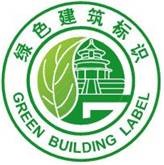
Context
Buildings are one of humanity’s most influential activities on the environment. China is in a rapid development phase, ranking No. 1 internationally in terms of annual building volume, with steadily increasing consumption of resources. Therefore, scientific development philosophy must be steadily created and seriously implemented, and the concept of sustainable development must be adhered to, to strongly develop green buildings. When developing green buildings, state technologic and economic policies that save resources and protect environment shall be implemented.
The purpose of formulating this standard is to regulate evaluation on green buildings and promote the development of green buildings. Due to different functions, buildings have a large discrepancy in terms of resource consumption and environmental effects. Considering the current construction environment in China, this standard will mainly evaluate residential buildings that are huge in quantities and public buildings that consume much energy and resources, like office buildings, mall buildings and hotel buildings. For evaluation on other buildings, this standard can serve as reference.
The Rating System
The Chinese Green Building System is made up of six components: land efficiency, energy efficiency, water efficiency, resource efficiency, environment quality and operational management. Each component has mandatory items, regular items and premium items. A project receives one point when it satisfies one regular or premium item requirement. The scoring system is more similar to that of NAHB National Green Building Standard than to that of LEED. The star level is decided by the minimum score of each component, not the total scores. For example, the residential evaluation table is as follow:

To scale up the existing program, MOHURD launched this campaign to officially allow provincial green building offices to administer the 1-star and 2-star labels, as the system had been originally designed; its own office would only evaluate applications for the 3-star label, the highest and most prestigious one. The ten designs certified so far include four 3-star, two 2-star and four 1-star labels.